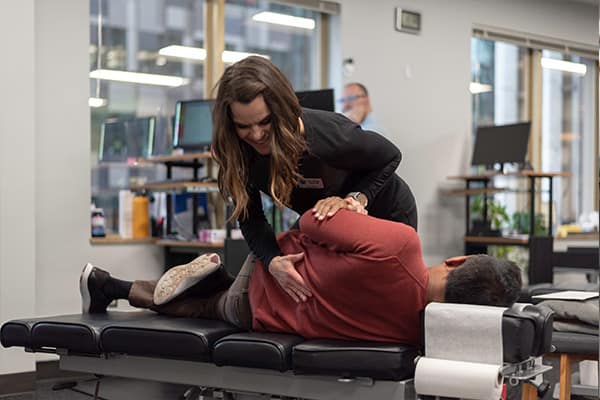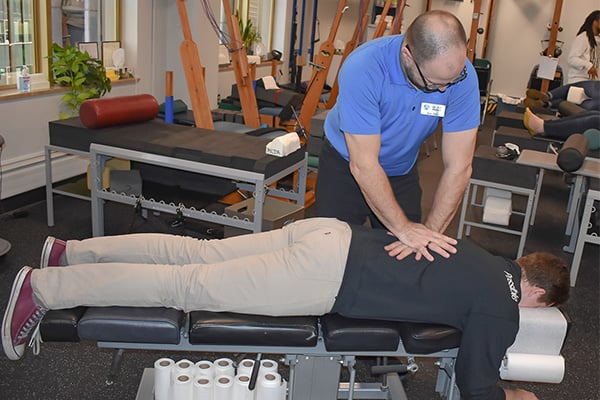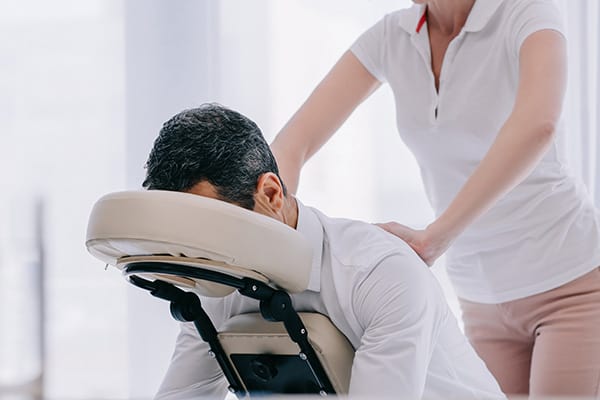Chiropractic Services
Pricing
50$ per visit. No hidden costs and no high-pressure sales. The practice is cash-based and will accept major credit cards, debit cards, personal checks and of course cash. Insurance is not accepted, nor is medicare worker's compensation or no-fault claims. Tips are welcome but not at all expected.
Services
Neck and Shoulder Pain

Pain in the neck can be extremely debilitating and can reduce the quality of life and lead to such symptoms as headache, jaw pain, as well as tingling, numbness, and weakness in the arms. The nerves that control the arms exit the spine at the neck. Insult to these nerves can cause pain in the shoulder and the arm. In addition, muscles of the shoulder themselves may be unbalanced, causing restricted and painful motion of that joint.
Effective treatment of the neck and shoulder addresses restricted motion of the neck with chiropractic adjustment and massage in the neck and shoulder region to reduce tension and balance the muscles of the area. The shoulder is then mobilized by the doctor and by the patient as well to restore proper, full range of motion and to rehabilitate the soft tissue in the area. Finally, the patient is given stretches and exercises to perform at home to maintain the results that they have gained through treatment.
Headaches

Headaches can severely reduce one's quality of life. They can be caused by many different factors such as trauma, improper blood flow to and from the brain (migraines), emotional stress, as well as tight musculature in the neck, shoulders, and jaw to name a few.
Chiropractic is effective for relieving many types of headaches. Particularly headaches due to muscular tension can be treated with chiropractic adjustment and release of muscles at the base of the skull, as well as muscles in the front and back of the neck. Blood flow in and out of the neck can also be facilitated by releasing stiff tissues in the region of the head and neck. In addition, chiropractic therapy coupled with soft tissue massage can give one a sense of release from stored stress in the body and give relief from headaches.
Lower Back and Hip Pain

Much like with neck pain and headaches, hip and low back dysfunction go hand in hand and contribute to one another. Low back dysfunction as a result of trauma, sports injuries, chronic postural problems and other causes can lead to pain and numbness or tingling in the buttocks, legs, and feet. If the hips are not moving properly the low back will attempt to compensate, leading to pain and hampered movement in the lower back.
Effective treatment of the low back will involve treating the hips as well and vice versa. Chiropractic adjustment, soft tissue massage, and assisted stretching of the muscles and soft tissue in the hips and low back will facilitate proper movement. The patient will also receive stretches and exercises to maintain balance and strength in the region.
Chiropractic Adjustment

Chiropractic adjustment is used to restore mobility to restricted joints of the spine through use of the doctor's hands. The doctor uses gentle force to move the different regions of the spine that have been found to be restricted. Often this movement is accompanied by a sound of release that is explained in greater detail in the FAQ section. The doctor first examines the patient to ensure that adjustment is safe for them and that adjustment is in fact what they need to get well. For patients who do not feel comfortable getting adjusted, there are alternatives to this type of treatment such as therapeutic massage techniques, stretches, and rehabilitative exercise. However, it is encouraged that patients try these techniques as they are very safe, not painful, and one of the essential tools the doctor possesses to get patients well as soon as possible.
Therapeutic Massage

Therapeutic massage is a great compliment to chiropractic care and is essential for quick recovery of the patient. The spine is encouraged to move during the chiropractic adjustment and the massage techniques are utilized to address the abnormal musculature in the region. Muscles that are too tight can produce unhealthy forces on the bones and joints. Humans also hold their emotional as well as physical tension in their muscles and this can manifest as rigid muscles that cause pain and restrict motion. They can be felt as knots in the back and neck as well. Releasing these structures through therapeutic massage feels amazing and is beneficial in many ways.
Rehabilitative Exercise

Pain-free and enjoyable exercise is essential to achieving optimal well-being. The exercise prescribed in this office is simple, effective, and comes with a very low time commitment. Dr. McIntyre feels that the best exercise a person can do is the kind that they WILL do. In light of that he typically gives patients one or two exercises to be performed once a day for no more than 2-3 minutes. With such a small time investment, it is easier for patients to find time to do and is not a hindrance to their busy lives. Rehabilitative exercise helps patients become better at listening to their bodies and gives them an active role in the treatment. Exercise is usually done at home, between visits. Regular exercise increases the likelihood that treatment will be successful and increases the speed of results, and gives patients a tool to maintain the benefits they have gained once treatment is over.
